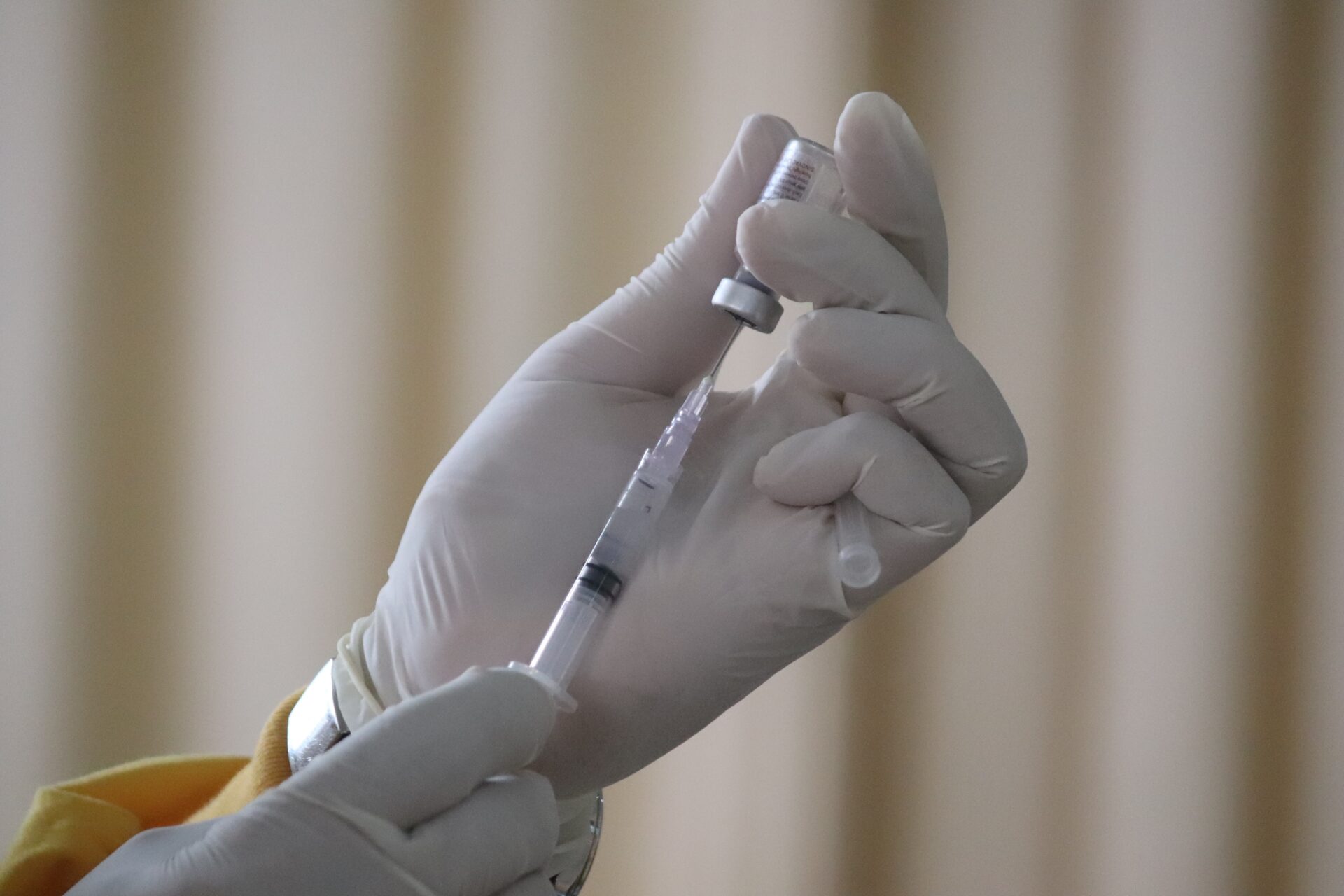Vaccine-preventable diseases (VPDs) are usually those that had a profound negative health impact on wide populations at one point in time. For health care personnel to lessen their own workload, and to avoid the risk of catching infectious diseases from patients, they are required by law to be vaccinated for some of these diseases before they can start working in a hospital, where they would be routinely exposed.
Who is considered a healthcare worker? If the vaccine-preventable diseases vaccination requirement applies to absolutely everyone, it will lessen the potential pool of manpower who can work in health care.
According to the National Library of Medicine, health care personnel deliver “care and services to the sick and ailing.” This list includes:
- Doctors
- Nurses
- Aides
- Helpers
- Laboratory technicians
- Medical waste handlers
Medical personnel are, in a sense, over-exposed to diseases and also have the highest risk of transmitting them. Which vaccine-preventable diseases should they definitely be protected against?
Hepatitis B vaccine
The Hepatitis B virus was discovered in 1965, considered a life-saving discovery because 80% of all liver cancers are caused by Hepatitis B and C. They were able to screen for the virus in 1971, and provide a sophisticated vaccine by 1981.
Hepatitis B is a liver infection that can become chronic. Because 9 in 10 infants who contract it are likely to have in chronically, most pediatricians recommend it as one of the first vaccines a child can be administered. The virus is transmitted whenever infected body fluids enter the bloodstream of a person not previously infected.
The high risk of liver infection and the relatively swift transmission style make this one of the recommended vaccines of healthcare workers.
Recommendation for Hepatitis B vaccine
There are three kinds of Hepa B vaccinations approved by the FDA. If you have received any of these three in the recommended doses, you may no longer need to get them. However, if you have received neither of these three or the dosage does not match the recommended frequency, you may need to consult and find a place for vaccination as soon as you need them.
- Engerix-B, 3 doses delivered intramuscularly, final dose several months apart
- Recombivax HB, 3 doses delivered intramuscularly, final dose several months apart
- Heplisav-B, 2 doses delivered intramuscularly, final dose a month apart
However, you may still be required to get an anti-HBs test to see if your immunity is up to par. If your anti-HBs are less than 10/mL, you may need to have another vaccination dose and then retest after 1–2 months. This additional test depends on your workplace and the patients you will be closely working with. For example, if your primary patients are children you are much more likely to need the Hepa B vaccine.
Flu vaccine (Influenza vaccine)
Influenza was first identified as more than the common cold when the Spanish flu, which is now recognized as the first version of the H1N1 influenza virus, swept across the world in 1918 and 1919. It killed between 20 and 50 million people before they realized that it was not as preventable as an infection because it was a virus. This was only recognized and isolated in 1933. It was eventually licensed for wider use in 1945 as the Second World War ramped up, causing fears of another pandemic.
While the disease can be mild, only causing chills and a fever, it can lead to complications such as pneumonia, which can be fatal. It can adversely affect young people, older people, and those with chronic diseases. Transmission is via air or infected surfaces, with a high possibility of infection, and the risk of the infection reaching a vulnerable population is high. This is why health care personnel are required to get this vaccine, as they would be routinely exposed both to possible patients.
Recommendation for the influenza vaccine
The annual flu vaccine is standardized across states, but you do need to update it every year.
For those over 65 years old, you can choose between:
- Fluzone High-Dose Quadrivalent
- Flublok Quadrivalent
- Fluad Quadrivalent
Make sure to get the influenza vaccination on time, and well before the colder months.
MMR vaccine (Measles, Mumps, & Rubella vaccine)
Measles, mumps, and rubella have generally similar symptoms. These include fever, rashes, and pain associated with the marks or rashes. Transmission is fast, through infected body fluids, and it can be airborne. Infants and young children are particularly vulnerable, and the disease can be fatal to some.
The vaccine has been available since 1971, and it was created as a combined vaccine to lessen the number of vaccinations a child would have to get. The combined vaccine is so compatible with itself that administering the MMR vaccine after receiving a vaccine dose against either measles, mumps, or rubella would not lead to any adverse reactions.
Recommendation for the MMR vaccine
The two FDA-approved MMR vaccines in the United States are MMR 2 and Priorix. You may have a vaccination record of MMR, which should be fine as long as health care personnel receive both doses.
If you did not receive both doses or you are missing proof of prior vaccination, you may opt to take a DNA-based PCR test to confirm if you have the necessary antibodies. If you are lacking antibodies against rubella only, one dose should be sufficient. If you are lacking antibodies against either measles or mumps, you will need two doses, 28 days apart.
Chickenpox vaccine (Varicella vaccine)
In 1875, chickenpox was identified as different from smallpox, needing its own separate treatment and, eventually, vaccine. It does manifest in marks all over the body, and results in sometimes dangerous fevers.
It is highly transmissible, from person to person, and it can emerge acutely in the form of pneumonia, blood infections, or skin infections. This unpredictability makes it dangerous, since no one knows how it will manifest in various individuals.
Recommendation for the Varicella vaccine
Only Varivax is approved for adults in the United States, but you only need one dose of it. It may also prevent against getting shingles (the adult version of chickenpox) in the future, although you will still need the shingles vaccine if you are over 50 years old even with prior vaccination with Varivax.
TDAP vaccine (Tetanus, Diphtheria, and Pertussis vaccine)
Like the MMR, Tetanus, Diphtheria, and Pertussis are vaccinated through a combined vaccine. Tetanus is usually caused by bacteria that enters the bloodstream through a puncture wound, and it can cause the stiffening of muscles, especially the famous symptom, lockjaw. It was isolated and identified in 1884.
Diphtheria causes a membrane to form over the throat, causing a cough and choking that can be fatal. It is highly transmissible through coughing or sneezing, or through infected body fluids directly entering a person’s bloodstream. It was only isolated enough for a vaccine in the 1940s.
Pertussis, also called whooping cough, is considered a modern disease, although there were records of similar symptoms in the 1500s. It can lead to intense coughing fits, and can be fatal if untreated or treated too late.
The vaccination for all three is combined.
Recommendation for TDAP vaccine
You need at least one dose of Adacel or Boosterix to cover all three diseases in one vaccine. If you are pregnant when you opt for the vaccine, you may choose to have the vaccine in the third trimester in order to prevent transmission to the baby.
Meningococcal Vaccine
The bacteria meningococcus causes meningitis, inflammation of the membranes around the brain and spinal cord. While most people recover from the bacterial form of meningitis, it can be harsh and fatal to those who contract it. It is not as infectious as influenza, for example, but it can be spread through long and close personal contact. It was first discovered in the 1800s, and can become epidemic if not discovered and prevented.
Recommendation for meningitis vaccine
You can choose between:
- MenACWY, 1 dose with a booster every 5 years;
- Men B, 2 or 3 doses 1 month apart; 3 doses are for higher risk patients
These are also known as the meningococcal conjugate vaccine and serogroup B meningococcal vaccine.
Conclusion
In the healthcare industry, it is inevitable that healthcare workers will be exposed to a wide array of patients. They cannot predict, and sometimes cannot choose, the kinds of patients they will come in contact with. Because of this, they are at high risk of catching preventable diseases, or spreading them. To maintain their own health and the health of the patients, it is best to prevent with vaccines what can prevented.
Resources
Advisory Committee on Immunization Practices (ACIP): https://www.cdc.gov/vaccines/hcp/acip-recs/index.html




